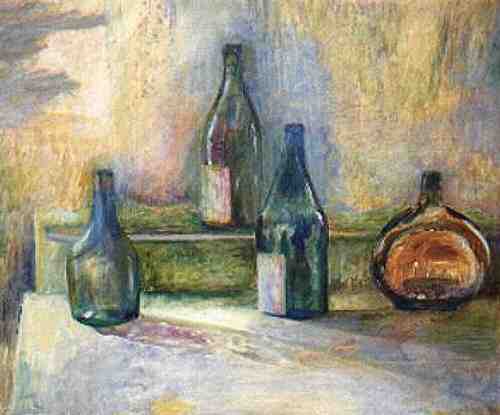
A D R I A N S T O K E S
PREFACE continues
page 5 of 8 |
Ultimately Stokes's organicism,
while it draws upon the nineteenth century tradition of naturalism, is rooted in his
experience of Alberti's architecture and Alberti's corporeal sensibility to the anatomy of
the wall. Alberti writes in his De Re Aedificatoria "that a building is very
like an animal, and that Nature must be imitated when we delineate it"12 and "that Nature was so
thorough in forming the bodies of animals, that she left no bone separate or disjointed
from the rest. Likewise, we should link the bones and bind them fast with muscles and
ligaments, so that their frame and structure is complete and rigid enough to ensure that its fabric will
stand on its own."
13 This organicist conception of architectural form becomes gendered as
Stokes, in exploring these great themes of life and birth, connects the Renaissance
iconography of the mother - and - child and of the putto, to Freud's - and later Melanie
Klein's - discoveries concerning the sexual life of the child. In a theory of ornament
that rejects any notion of ornament qua ornament the efflorescence of
"stone-blossom" and stone consciousness" and the inflorescent
incrusted aspect of "steel consciousness" are viewed as children born out of an
immanent materiality. In The Quattro Cento he writes that "the architect's
building is female, set on the earth like Giorgione's woman by the running stream [and]
the sculptor's attendant statuary are her lovers and sons."14
Space is also viewed as a causation of
mass, existing in equipoise with it. Against the neutralized "essential" space
defined by de-materialized planes of modernist theory - or an extreme corporeality of form
- Stokes posits a reciprocity of mass and space. This breathing interchange of solid and
void, in which each lends identity to the other, is qualitatively remote from the plastic
inter-penetration of form and space sought by the Baroque and modernism. In Stones of
Rimini Stokes richly develops these themes, contrasting the reverence for materiality
and interval of the "carving" approach with the plastic attack of the "modeller."
Approached through the writings, with the expectation perhaps of Piero's sense of contour and interval or, possibly, the structured architectural strokes of Cézanne - the tentative nebulosity of Stokes's paintings can initially surprise. His canvases display art's capacity to concurrently probe inwards to the inscape of things and outwards to envelop the observer.
[double click on image to enlarge, then single click to restore. N.B. sorry - does not work with Netscape browsers]